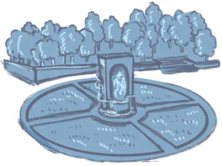Taksim Square can be depicted as a gate to Beyoğlu, and also the junction point of the roads connecting many districts (on the European side) of Istanbul. The history of Taksim Square dates back to Taksim Maksemi after which the square was named. Taksim Maksemi, the structure where Beyoğlu’s water was distributed within the region, was opened in 1731. Opened in 1806, Taksim Military Barracks was the second biggest structure to be built on the square. After it was left empty in 1921 its courtyard was transformed into a football field. In 1940, Taksim Gezi Park was built replacing the barracks which were demolished in 1939. Another structure facing the square is the Hagia Triada Greek Orthodox Church built-in 1880.
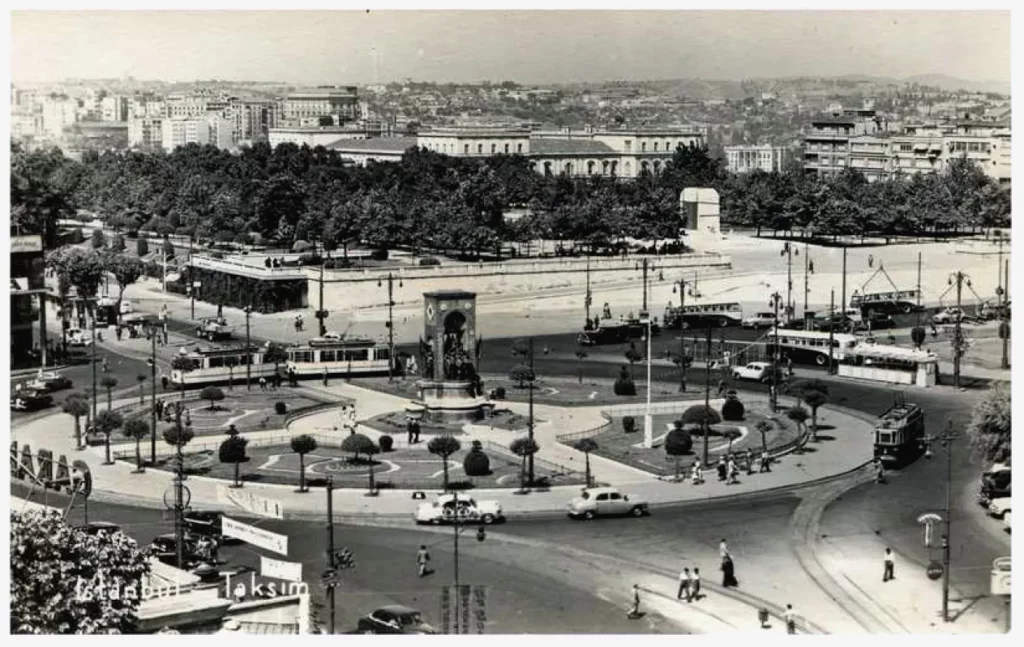
Feza Kürkçüoğlu Archive
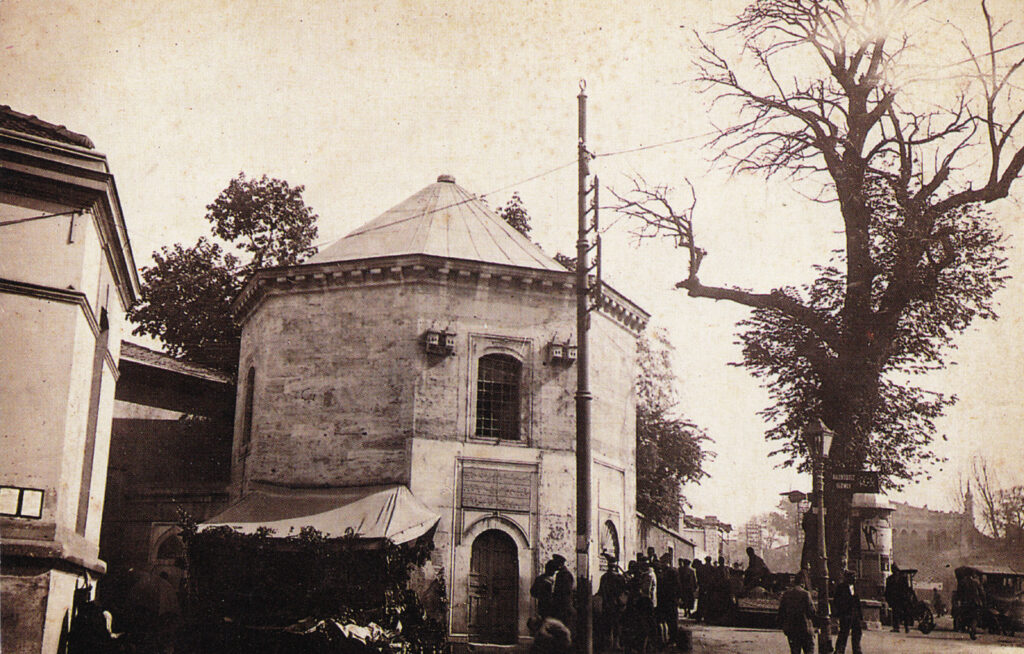
Feza Kürkçüoğlu Archivei
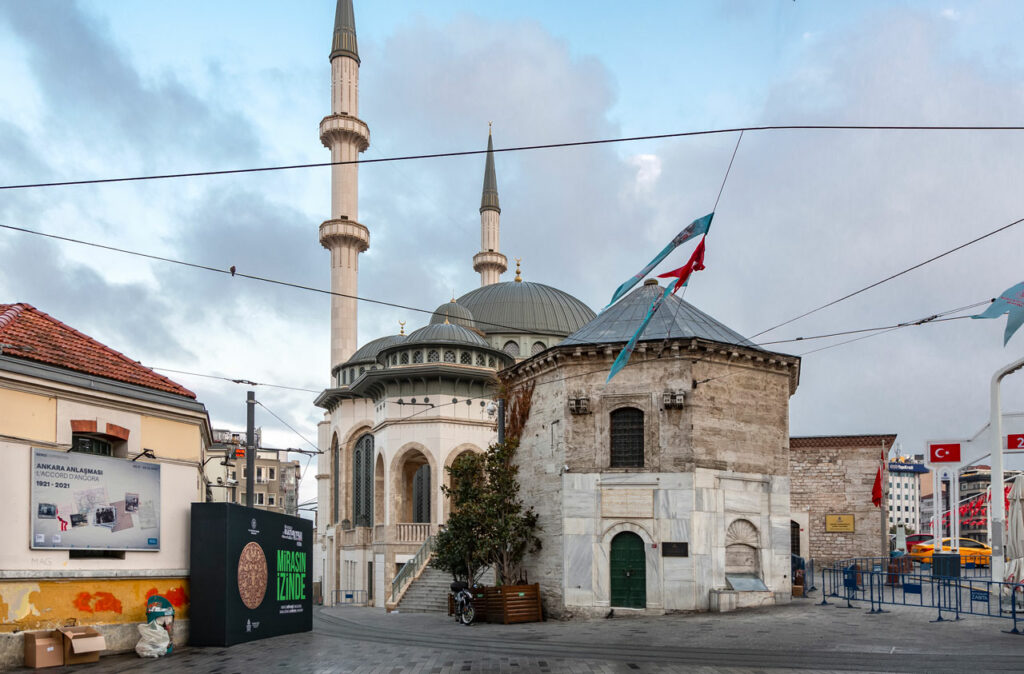
Video-Photo: Çağrı İşbilir
Republic Monument, which was unveiled in 1928, in the Republic era, became a landmark of Istanbul. The buildings located on southeastern Ayazpaşa side of the square were demolished in 1946 and there began the construction of “Istanbul Cultural Center”. Completed in 1969, the building started to function by the name “Opera House”, however, it was completely destroyed in the great fire in 1970. Rebuilt and opened in 1972 with the title “Atatürk Cultural Center”, the building was closed in 2008, and finally demolished in 2018. The construction of the new building is recently completed and it was officially opened on October 29th, 2021.
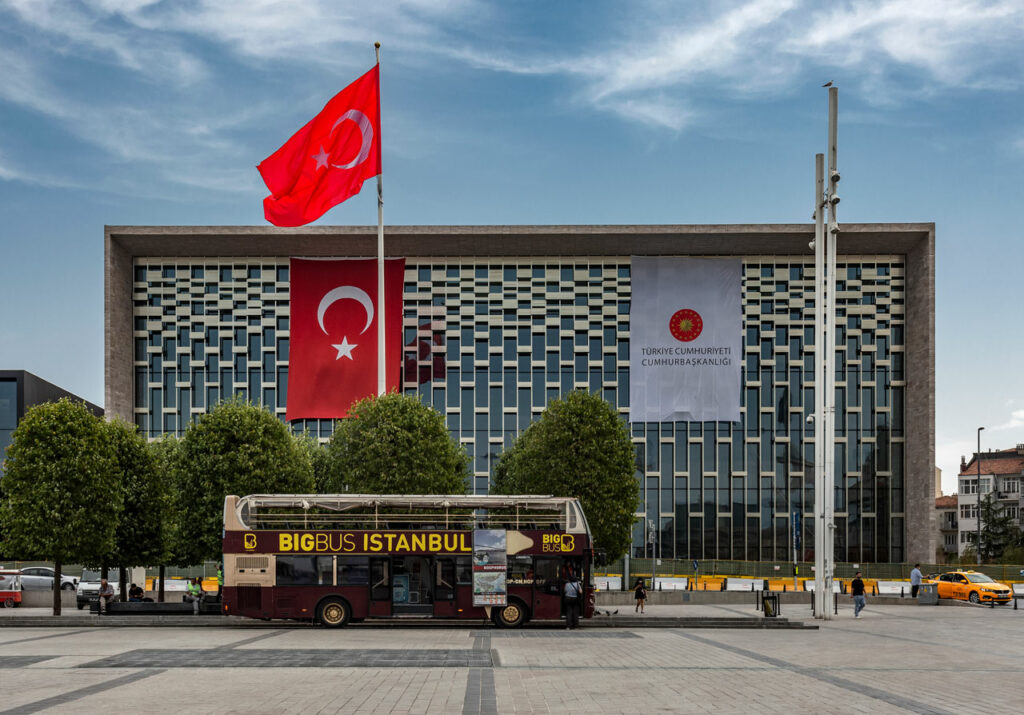
Video-Photo: Çağrı İşbilir
The tallest building facing Taksim Square, The Marmara Taksim Hotel, was opened in 1975 under the name Intercontinental. The building was renamed several times such as; Etap Marmara Hotel, The Marmara Istanbul Hotel, and The Marmara Taksim Hotel. It was renovated in 2016. The last structure to be built on the square is Taksim Mosque, the building process of which was quite a hassle since 1968. Its construction began in 2017, and the mosque was opened in 2021.
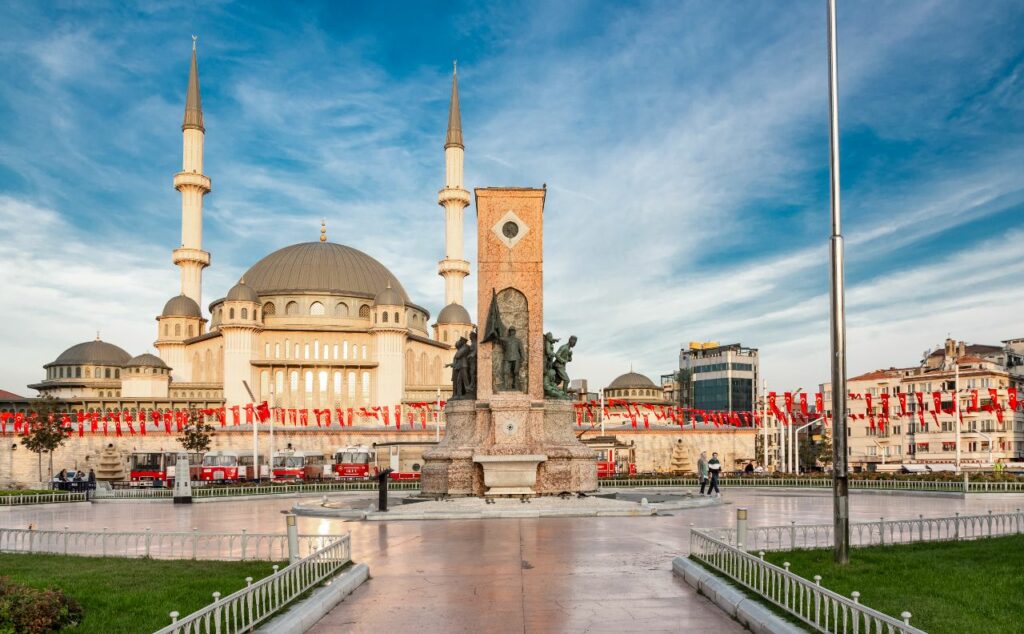
Video-Photo: Çağrı İşbilir
The prominent location for ceremonies and official visits, Taksim Square hosted mass meetings and protest marches of political parties or various organizations, as well as May Day rallies. The series of organized events where Istanbul’s Greek community was assaulted and their properties were looted, namely İstanbul Pogrom, started in Taksim Square on 6-7 September 1955. The historic “Bloody Sunday” on February 16th, 1969 also happened on Taksim Square. Reactionaries, with the backing of the police, attacked the revolutionary students who were protesting against the American Sixth Fleet at the Square. At the time of the events two protesters, Turgut Aytaç and Duran Erdoğan, both workers, were killed, and 200 people were injured.
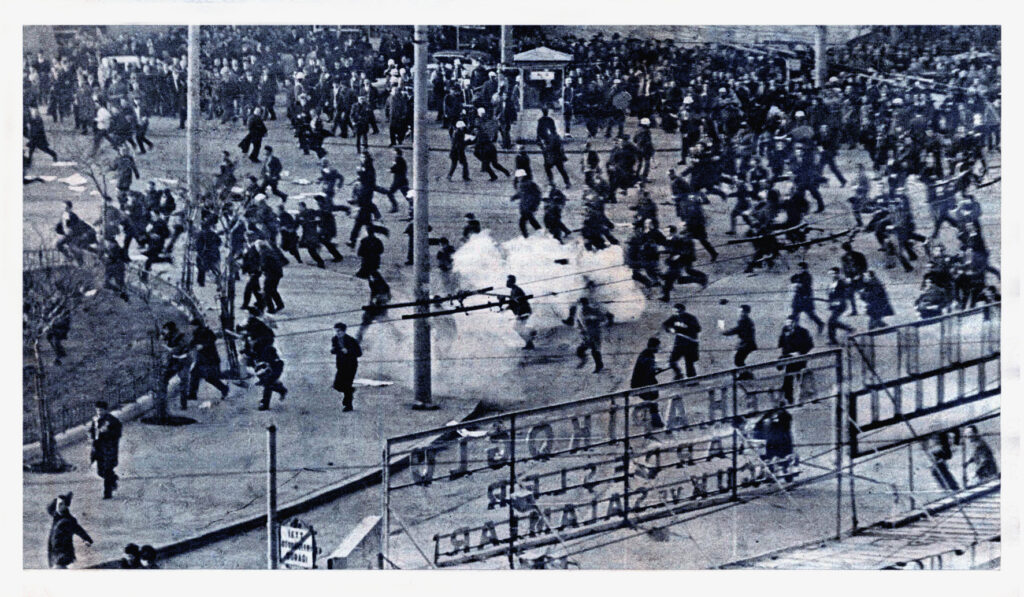
Feza Kürkçüoğlu Archive
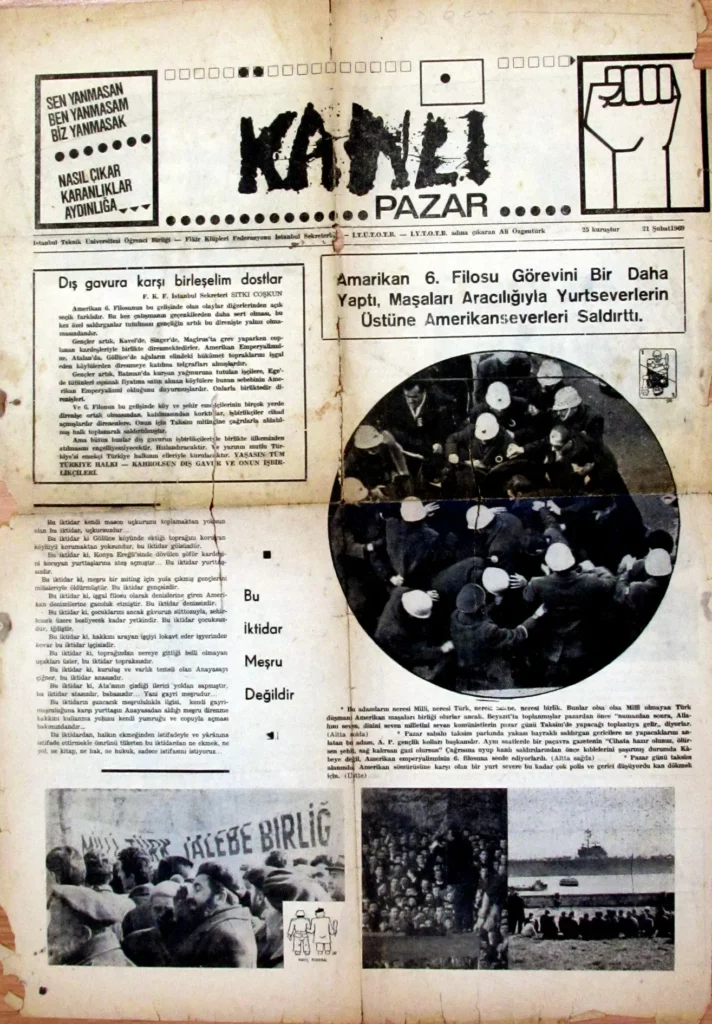
Feza Kürkçüoğlu Archive
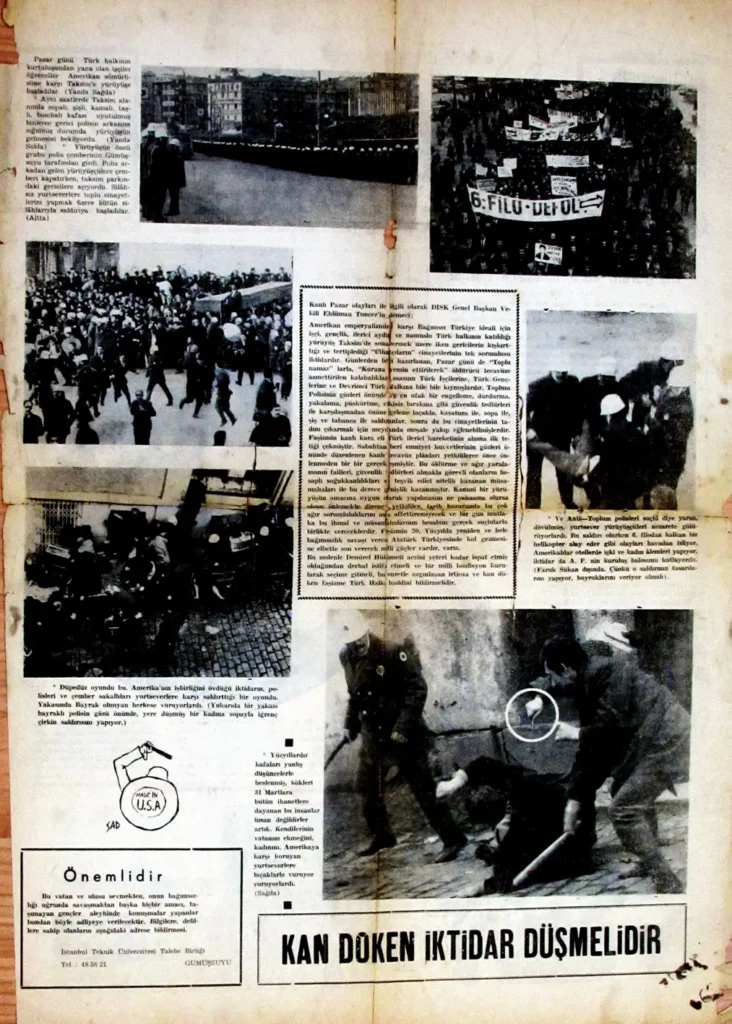
Not long after the Bloody Sunday in 1969, another bloody Sunday took place. The largest rally that took place in Taksim Square on May 1st, 1977, and what happened after went down in history as the May Day Massacre. Taking place for the first time in Taksim Square in 1976, the May Day rally was organized by the Confederation of Revolutionary Trade Unions of Turkey (DİSK) and 150,000 people participated. The following year, 500,000 people would participate in the rally that was again organized by the Confederation (DİSK). Marches started in two routes, Beşiktaş and Saraçhane, towards Taksim. The square was completely full when the president of the Confederation (DİSK) Kemal Türkler started his speech around 18.45. As it was nearing 19.00 and Türkler was almost finished with his speech, a gunshot was heard from the Tarlabaşı side (of the square), two more gunshots followed. Then, more gunshots were fired from the Directorate of Water Supply building and the upper floors of the Intercontinental Hotel (now The Marmara Taksim Hotel), while machine guns started raiding the area from inside two cars. Police intervention with water cannons, sound bombs, and tear gases only caused more panic. The square was filled with people running from one side to another. Taksim Square was evacuated while people who were crushed, injured, and dead still laid on the ground. Protesters who ran for their lives toward the Kazancı Slope which has direct access to the square were killed there, and the injured were carried to Taksim’s main emergency hospital (Taksim İlk Yardım) and other hospitals.

Feza Kürkçüoğlu Archive
Officials announced 34 killed and 136 injured, however, the numbers provided by the Prosecution and Police offices and the newspapers were inconsistent. DİSK declared that 36 people were killed and hundreds injured. Following the massacre, government and pro-government media outlets adopted a manipulative narrative, blaming the left-wing factions for inner conflicts. May 1st, 1977 was a massacre organized by the counter-guerrilla aiming to suppress the growing public opposition and revolutionary movement. And this massacre became a turning point of the revolutionary movement.
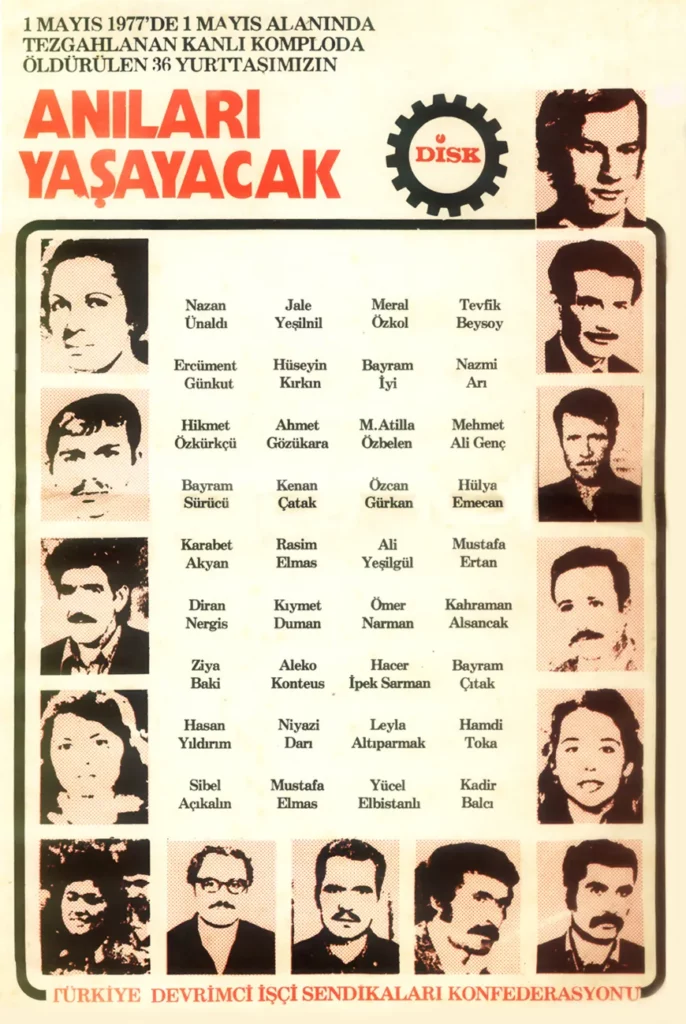
Feza Kürkçüoğlu Archive
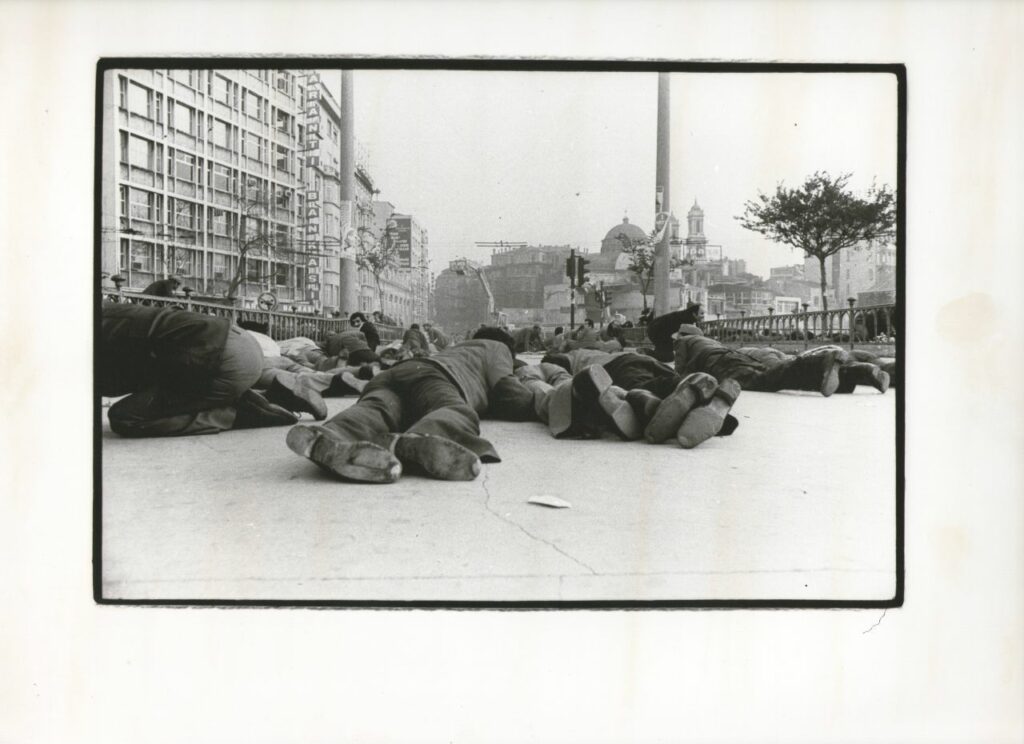
Photo: Coşkun Aral
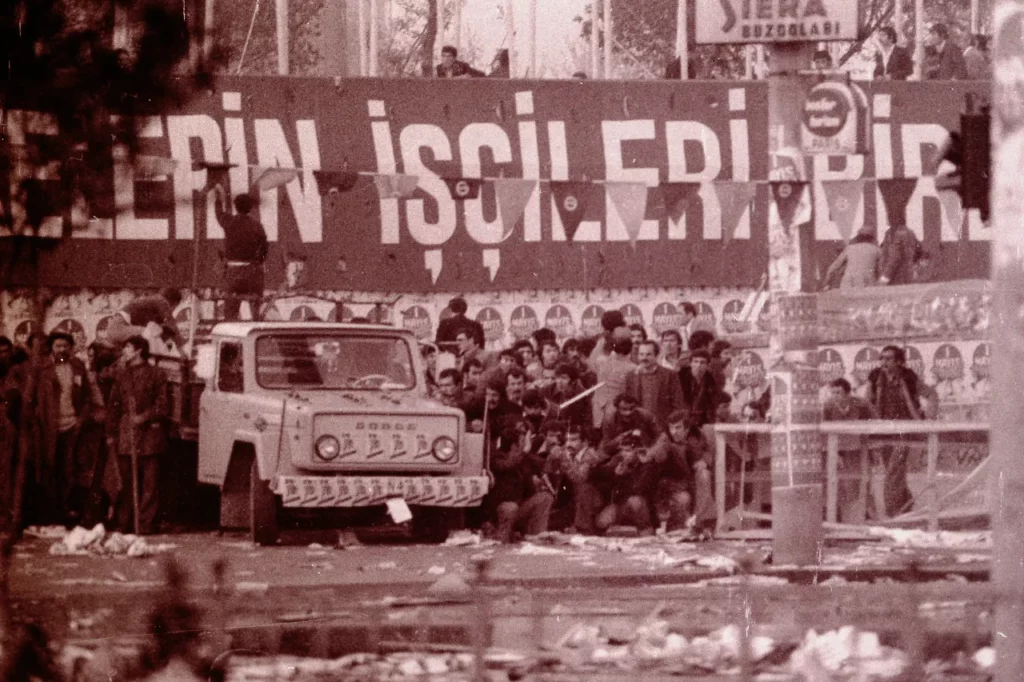
Photo: Coşkun Aral
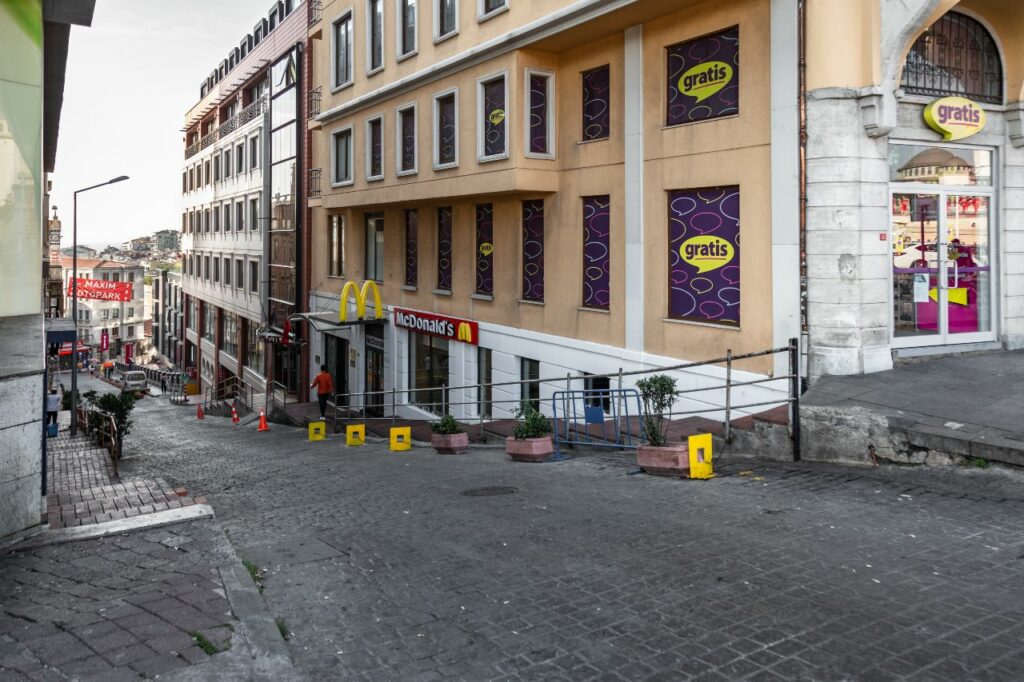
Video-Photo: Çağrı İşbilir
For many years there no definitive statements made regarding the number of people killed in the May Day Massacre, except for some inconsistent numbers. According to the Deputy Secretary General of DİSK Fahrettin Engin Erdoğan’s research in 2016, 41 people lost their lives at the scene: Ahmet Gözükara, Aleksandros Konteas, Ali Sidal, Ali Yeşilgül, Bayram Çıtak, Bayram Eyi, Bayram Sürücü, Diran Nigiz, Ercüment Gürkut, Garabet Akyan, Hacer İpek Saman, Hamdi Toka, Hasan Yıldırım, Hatice Altun, Hikmet Özkürkçü, Hüseyin Kırkın, Jale Yeşilnil, Kadir Balcı, Kadriye Duman, Kahraman Alsancak, Kenan Çatak, Leyla Altıparmak, Mahmut Atilla Özbelen, Mehmet Ali (Mustafa) Elmas, Mehmet Ali Genç, Mehmet Ali Kol, Meral Cebren (Özkol), Mür-tezim Ortulu, Mustafa Ertan, Nazan Ünaldı, Nazmi Arı, Niyazi Darı, Ömer Narman, Özcan Gürkan, Ramazan Sarı, Rasim Elmas, Sibel Açıkalın, Tevfik Beysoy, Yücel Elbistanlı, Ziya Baki and an unknown 35-year-old man.
Following that, “the May Day Lawsuit” was filed where DİSK executives and revolutionaries who were caught trying to escape from the square were named as defendants. In the long-running case, neither the ones who caused the whole bloodshed nor the panicmongers faced trial. Following the May Day Massacre, one of the deadliest massacres where the “perpetrator was not-unknown”, May Day was celebrated in Taksim Square in 1978 with the participation of hundreds of thousands. May Day celebrations were prohibited in 1979 and 1980. However, illegal demonstrations were organized in Istanbul’s different districts.
The history of the Surp Agop Armenian Cemetery lying on the area extending from Hilton to Taksim Gezi Park dates back to 1560. Part of the cemetery was expropriated in 1912 for road construction. After winning the lawsuit filed in 1939, Istanbul Municipality began demolishing and building the area extending from Gezi to Harbiye. Having been rezoned several times since the Republic, the square survived the demolitions of Adnan Menderes and Bedrettin Dalan and remains intact today.
Another historic event regarding Taksim Square is the Gezi Resistance. A group of young protesters started a sit-in at the Gezi Park when some trees were cut down and a wall was demolished to start the redevelopment plan that involved the rebuilding of Taksim Military Barracks. The police used disproportionate force in the eviction of the protesters which sparked public outrage, then resistance grew to a point where it became a mass demonstration. The park was occupied, and the “Gezi Resistance” spread across the country. During the protests Mehmet Ayvalıtaş, Abdullah Cömert, Ethem Sarısülük, Ali İsmail Korkmaz, Ahmet Atakan and Berkin Elvan were killed. According to official numbers, 2.5 million people have participated in the protests and there are still ongoing cases against many of them.

Photo: Mehmet Kaçmaz (NarPhotos)
Having survived numerous renovations since the early years of the Republic, as well as the demolition acts of Adnan Menderes and Bedrettin Dalan (former Istanbul Mayor), Taksim Square is the most prominent one among Turkey’s famous squares. Another design proposal for the square appeared on the urban agenda after the Istanbul Metropolitan Municipality organized a design competition in 2021. Following a preliminary evaluation, three short-listed projects were presented to the votes of the Istanbulites and it was decided that the top-voted project would be constructed. However, this urban design project also lacked connections with historic events like the May Day Massacre, that altered urban memory tremendously and missed to address the criticism or expectations regarding this matter. The idea of a monument to be designed collectively, taking a multitude of components and dynamics into consideration, still awaits as a valuable opportunity to carry the Square’s history to today.
